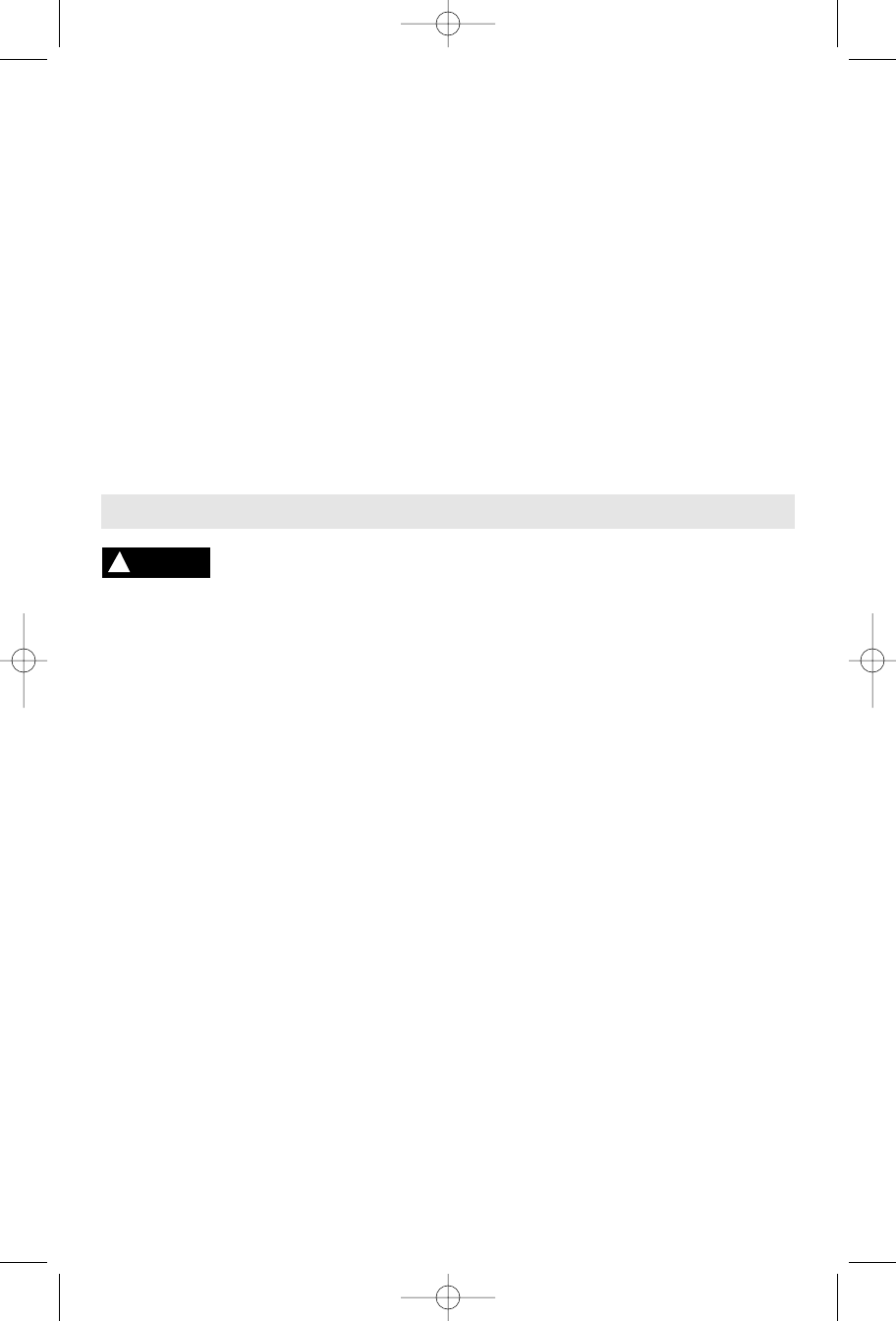
-3-
Safety Rules for Circular Saws
Keep hands away from
cutting area and blade. Keep
your second hand on auxiliary handle, or
motor housing.
If both hands are holding the
saw, they cannot be cut by the blade.
Hold the
saw firmly to prevent loss of control. Figures in
this manual illustrate typical hand support of the
saw. NEVER place your hand behind the saw
blade since kickback could cause the saw to
jump backwards over your hand.
Keep your body positioned to either side of
the saw blade, but not in line with the saw
blade.
KICKBACK could cause the saw to jump
backwards. (See “Causes and Operator
Prevention of Kickback.”)
Do not reach underneath the work. The
guard cannot protect you from the blade below
the work.
Do not attempt to remove cut material
when blade is moving.
Check lower guard for proper closing before
each use. Do not operate saw if lower guard
does not move freely and close instantly.
Never clamp or tie the lower guard into the
open position.
If saw is accidentally dropped,
lower guard may be bent. Raise the lower guard
only with the Lower Guard Lift Lever and make
sure it moves freely and does not touch the
blade or any other part, in all angles and depths
of cut.
Check the operation of the lower guard
spring. If the guard and the spring are not
operating properly, they must be serviced
before use.
Lower guard may operate
sluggishly due to damaged parts, gummy
deposits, or a buildup of debris.
Disconnect
battery pack from tool. Periodically remove the
blade, clean the upper, lower guards and the
hub area with kerosene and wipe it dry, or blow
it clean with compressed air.
Lower guard should be retracted manually
only for special cuts such as “Pocket Cuts”
and “Compound Cuts”. Raise lower guard
by Lower Guard Lift Lever. As soon as blade
enters the material, lower guard must be
released.
For all other sawing, the lower guard
should operate automatically.
Always observe that the lower guard is
covering the blade before placing saw down
on bench or floor.
An unprotected, coasting
blade will cause the saw to walk backwards,
cutting whatever is in its path. Be aware of the
time it takes for the blade to stop after switch is
released.
NEVER hold piece being cut in your hands
or across your leg.
It is important to support
the work properly to minimize body exposure,
blade binding, or loss of control.
Hold tool by the insulated gripping surfaces
when performing an operation where the
cutting tool may contact hidden wiring.
Contact with a "live" wire will also make
exposed metal parts of the tool “live” and shock
the operator.
DANGER
!
Maintain tools with care. Keep cutting
tools sharp and clean.
Properly maintained
t
ools with sharp cutting edge are less likely to
b
ind and are easier to control.
Check for misalignment or binding of
moving parts, breakage of parts, and any
other condition that may affect the tool's
operation. If damaged, have the tool
serviced before using.
Many accidents are
caused by poorly maintained tools.
Use only accessories that are
recommended by the manufacturer for
your model.
Accessories that may be
suitable for one tool may create a risk of
injury when used on another tool.
Service
Tool service must be performed only by
q
ualified repair personnel.
S
ervice or
m
aintenance performed by unqualified
personnel may result in a risk of injury.
When servicing a tool, use only identical
replacement parts. Follow instructions in
the Maintenance section of this manual.
Use of unauthorized parts or failure to follow
Maintenance Instructions may create a risk of
shock or injury.
SM 1619X02227 01-07 1/12/07 3:22 PM Page 3


















